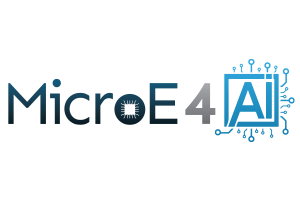Intelligence Value
The MicroE4AI program aims to drive innovations in hardware/ software and algorithm-architecture that improve the performance of Artificial Intelligence (AI) and Machine Learning (ML) applications packaged in highly efficient, edge-capable microelectronic devices. Additionally, MicroE4AI seeks to cultivate new materials, processing and science improving the performance, emphasizing compactness, minimal-weight, and modest energy requirements, of AI and ML endowed microelectronic devices. Deployment of AI and ML capable devices to edge computing applications will help the U.S. Intelligence Community (IC) mission by creating efficient and cost-effective smart sensors, as well as autonomous and adaptable computing capabilities.
Summary
Currently, AI and ML algorithms are hosted on high-performance general-purpose microprocessors and Graphic Processing Unit (GPU) devices. While these devices are flexible and well suited for hosting AI/ ML algorithms, they are costly, seldom small, demand considerable energy resources, and require connectivity to large data stores that often reside in the cloud. MicroE4AI seeks to bring AI and ML capabilities to minimally resourced edge computing applications, facilitating next generation intelligent edge computing systems, smarter sensors, automated filtering, and processing. Efficiently and autonomously acting upon and forwarding critical intelligence information from edge processing and sensing will greatly contribute to the generation of high-quality intelligence products benefiting the IC and national security.
The MicroE4AI program encompasses research from 12 diverse seedling efforts. Several seedlings seek to develop microelectronics, software, and algorithmic innovations packaging AI and ML algorithms into bespoke edge computing devices. Other seedlings will investigate new materials, processing and science advancing microelectronic devices embodying AI/ML algorithms, tailored for highly resource efficient edge computing applications. Desirable outcomes for MicroE4AI include the development of artificially intelligent navigation systems for Unmanned Autonomous Vehicles (UAVs), hybrid analog/digital/photonic computation, and advanced diagnostics and tamper detection for microelectronic devices.
The MicroE4AI program began in September 2021 and is slated to run for two years.


